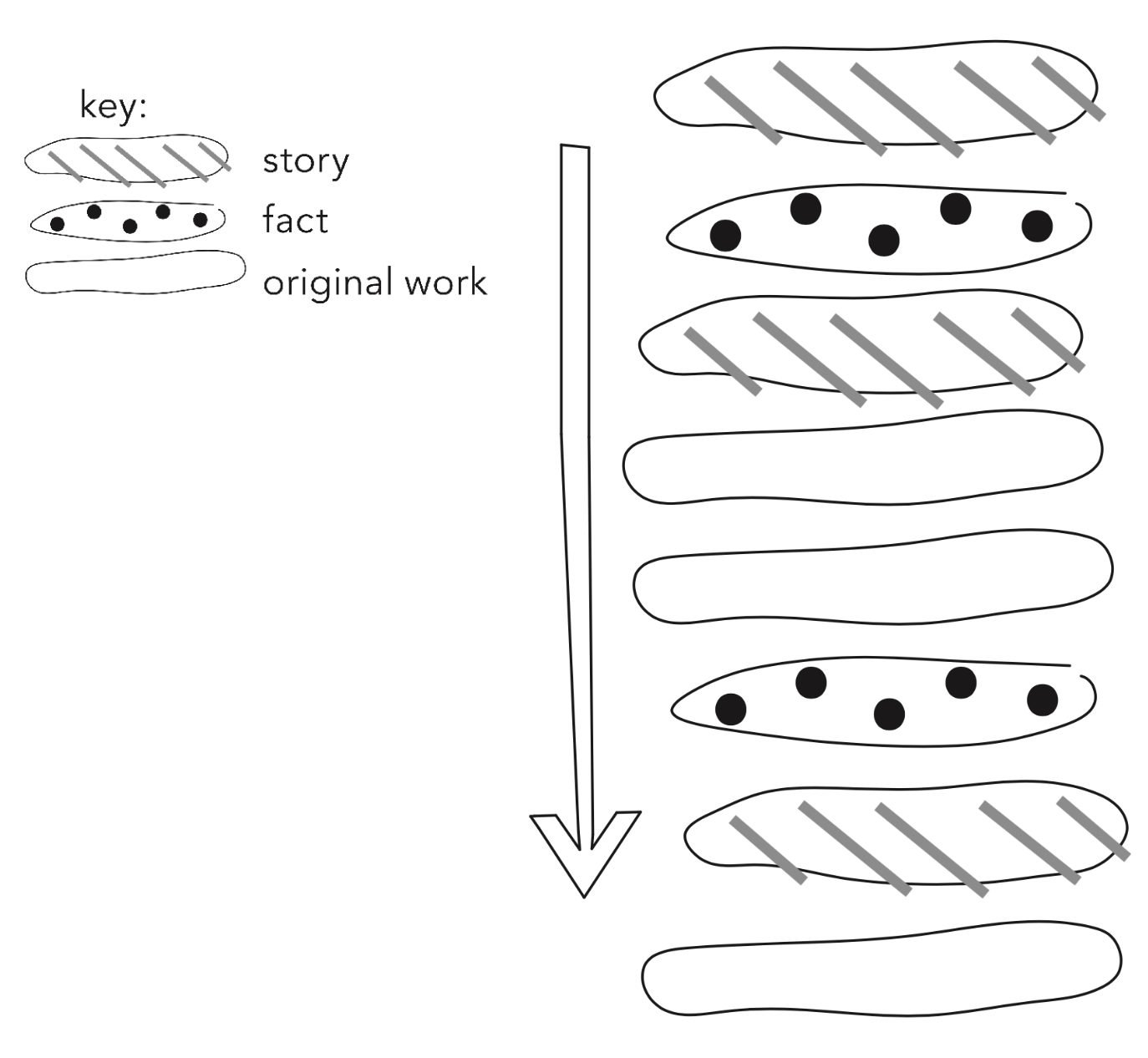Speech Diagrams
Outlining can help in preparing to write a speech as much as a paper. They are useful planning tools that clarify organization and can help you decide what to include. However, standard outlines for organizing thoughts for a paper are typically linear and rhythmic, which is useful for organizing writing, but not ideal for a speech.
Think of the differences between writing and speaking from the point of view of the audience.
The reader of a text:
can read at any speed
can reread or refer back to earlier material
can stop to look things up
chooses the location and conditions for reading
steps away when they need a break
The audience of a speech:
must process information in the moment
has little control over distractions or the social setting
may be listening closely, but will likely forget details of content
can take in gesture, facial expressions, and tone of voice
When preparing a presentation, remember the audience’s needs and utilize all of your available resources: simplify, signpost, and repeat key information; use visuals, take up space, and engage with emotions to grab and hold listeners’ attention. Unlike a traditional outline, speech diagrams, or visual outlines, can represent these elements in the planning stages.
Speech diagrams allow us to arrange points around themes and find relationships within a topic by sketching out the flow of content, using symbols for different topics, and moving in any and all directions on the page. To start, think broadly about your topic and try some of these strategies:
Draw, doodle, or scatter words on a page. Then, move things around and add arrows and connectors as you notice themes and patterns.
Start with something familiar—a mind map, Venn diagram, or an illustration of your idea.
Think about how you want the audience to experience your speech. Can you draw it? Or design a map for it?
Notice visual content that’s important to the topic. If you draw a diagram for yourself, it might be useful to share that with the audience as well.
The following examples could help you find the right shape for your speech—or imagine an even better version. These are not the only visual outline options or the only types of speeches.
Linear Speech: Points or events build off each other sequentially or chronologically. This format is best for telling stories or histories, explaining process or giving instructions.
Thematic Speech: Present a central idea, then explain smaller details or topics and connect them to that theme, one at a time. This works well for presenting an analysis or research findings along with specific pieces of evidence, and even for an artist’s talk focused around a core idea.
Layered or Woven Speech: This format intersperses short anecdotes and ideas, repeating themes and weaving together a cohesive understanding of the whole. This is often ideal for an artist’s talk, since you can address multiple facets of your work.
Full Circle: Sometimes a speaker will start with a story that may seem unrelated to the actual topic, then proceed with more serious or relevant details, and ultimately tie the speech back to the story at the end. This is useful for making ideas relatable, when presenting a proposal, for example.




